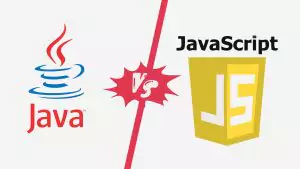Java is a versatile and widely-used programming language known for its object-oriented nature. One of the fundamental building blocks of Java classes is the concept of fields. Fields are essential components that allow developers to define and work with variables inside a class. In this guide, we will delve into the concept of fields in Java, understand their syntax and usage, and explore various aspects related to them.
Understanding Java Fields
In Java, a field is a variable declared within a class, enabling it to store data relevant to that class. Fields are responsible for holding object state and data, making them critical elements of Java’s object-oriented paradigm. As seen in the keyword analysis, Java fields play a crucial role in defining class properties like name, position, salary, and hiredDate in an Employee class. Fields are an integral part of Java’s encapsulation principle, ensuring data integrity and accessibility control within a class.
Field Declaration Syntax
The syntax for declaring a Java field involves various components, each of which serves a specific purpose. Let’s break down the field declaration syntax:
[access_modifier] [static] [final] type name [= initial value] ;- Access Modifier: The access modifier determines the accessibility of the field from other classes. Java provides four access modifiers –
private,package,protected, andpublic. The choice of access modifier defines the scope of the field’s accessibility. - Static: The
statickeyword indicates whether the field belongs to the class itself rather than instances of the class. A static field is shared among all objects of that class and is accessed using the class name. - Final: The
finalkeyword makes the field a constant, meaning its value cannot be changed after initialization. Final fields are often used for values that remain constant throughout the program’s execution. - Type: The data type of the field specifies the kind of data it can store, such as
String,int,Date, etc. - Name: The name of the field is used to reference and access it from within the class or other classes (based on the access modifier).
- Initial Value (Optional): This part allows you to assign an initial value to the field at the time of its creation. It is optional but recommended to provide an initial value for clarity and consistency.
Field Access Modifiers
As mentioned earlier, Java provides four access modifiers for fields, each serving a specific purpose:
- private: When a field is declared as
private, it can only be accessed within the class in which it is defined. It offers the highest level of encapsulation, ensuring that the field is not accessible from any other class. - package: Fields with no explicit access modifier (i.e., no keyword specified) have package-level access. In this case, the field can be accessed within the same package, including all classes within the package.
- protected: The
protectedaccess modifier allows the field to be accessed within the class itself, its subclasses, and other classes in the same package. - public: Fields marked as
publiccan be accessed from any class in the application, regardless of the package they belong to. It provides the broadest level of accessibility.
Static vs. Non-static Fields
Java fields can either be static or non-static. Understanding the difference between these types is crucial for designing class structures effectively.
- Static Fields: A static field belongs to the class itself rather than instances (objects) of the class. This means that all objects of the class share the same static field and its value is consistent across all instances. Static fields are declared using the
statickeyword and are typically used for constants and shared data. - Non-static Fields: Non-static fields are specific to individual instances (objects) of the class. Each object of the class has its copy of non-static fields, and their values can vary from one instance to another. Non-static fields are declared without the
statickeyword.
Final Fields – Constants
The use of final with a field makes it a constant, meaning its value cannot be changed once assigned. Final fields are often declared as static as well to make them class-level constants. A common naming convention for final fields is to use all uppercase letters with words separated by underscores.
Naming Java Fields
When naming Java fields, it’s essential to choose meaningful and descriptive names that reflect the data they hold. A well-chosen field name enhances code readability and makes it easier for developers to understand the purpose of the field. As shown in the keyword analysis, the names name, position, salary, and hiredDate are intuitive and meaningful in the context of an Employee class.
Initializing Java Fields
Java fields can be initialized with an initial value at the time of their declaration. Initialization is done either directly at the field declaration or inside constructors. Initializing fields provides default values and ensures that the object is in a consistent state when created.
Java fields are a fundamental concept that allows classes to store and manage data efficiently. They play a vital role in encapsulating data within objects, enabling better code organization and reusability. By understanding the syntax, access modifiers, and distinctions between static and non-static fields, developers can design robust and maintainable Java classes. Fields, combined with methods, form the backbone of object-oriented programming, empowering developers to create complex and feature-rich applications in Java.
FAQ
What is the purpose of Java fields?
Java fields serve as variables within a class, allowing it to store data relevant to that class. They are used to define the properties and state of objects, enabling the encapsulation of data within the class. Fields facilitate the storage and manipulation of data, making them a fundamental building block in Java’s object-oriented programming paradigm.
Can a Java field be both static and final?
Yes, a Java field can be both static and final. When a field is declared as static final, it becomes a class-level constant, meaning its value remains the same throughout the program’s execution. Static final fields are shared among all instances of the class and can be accessed using the class name.
How are Java fields accessed and modified?
Java fields can be accessed and modified using the dot notation. To access a field, you need an instance of the class (object), and you use the object’s name followed by a dot and the field name. For example: objectName.fieldName. To modify the field’s value, simply assign a new value to it: objectName.fieldName = newValue.
Are Java fields case-sensitive?
Yes, Java fields are case-sensitive. This means that field names must be written with consistent capitalization when accessing or modifying them. For example, myField and myfield would be treated as two separate fields.
What are the access modifiers for Java fields?
Java fields can have four access modifiers:
- private: Fields declared as private can only be accessed within the same class. They provide the highest level of encapsulation.
- package (default): If no access modifier is specified, the field has package-level access, meaning it can be accessed within the same package.
- protected: Fields with the protected access modifier can be accessed within the class, its subclasses, and other classes in the same package.
- public: Public fields are accessible from any class in the application, regardless of the package they belong to. They offer the broadest level of accessibility.
Can you have multiple fields with the same name in Java?
Yes, you can have multiple fields with the same name in Java, but they must be in different classes or have different access scopes. If multiple classes have fields with the same name, they do not conflict with each other as they belong to different class scopes. However, within the same class, you cannot have multiple fields with the same name, as it would result in a compilation error.
Follow us on Reddit for more insights and updates.





Comments (0)
Welcome to A*Help comments!
We’re all about debate and discussion at A*Help.
We value the diverse opinions of users, so you may find points of view that you don’t agree with. And that’s cool. However, there are certain things we’re not OK with: attempts to manipulate our data in any way, for example, or the posting of discriminative, offensive, hateful, or disparaging material.